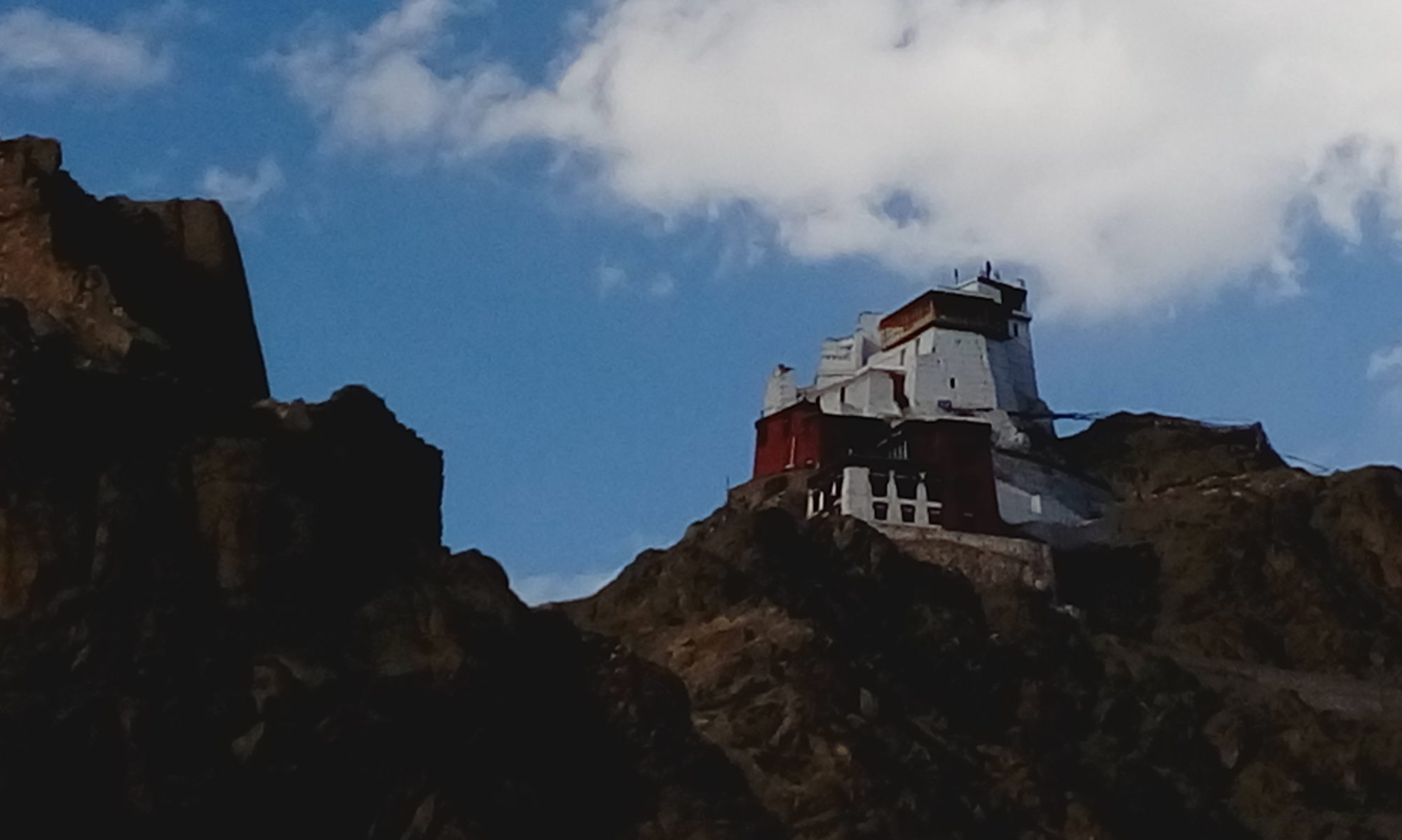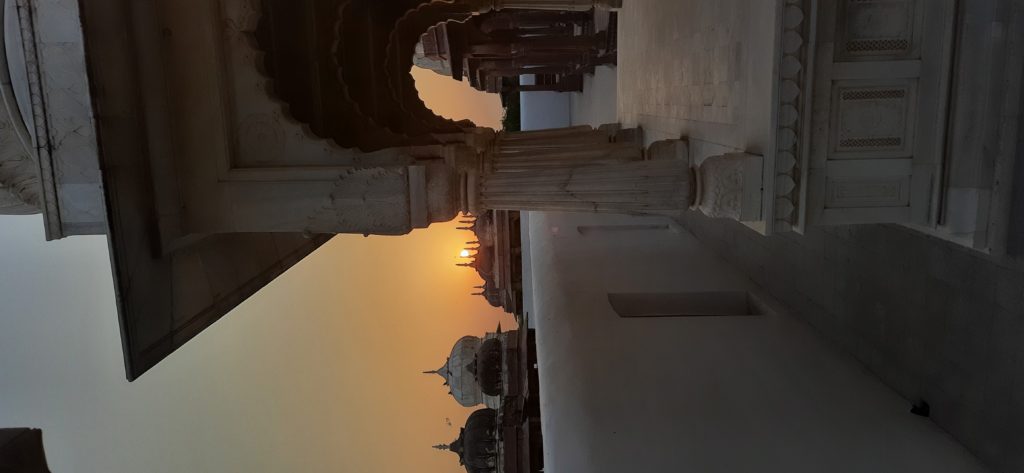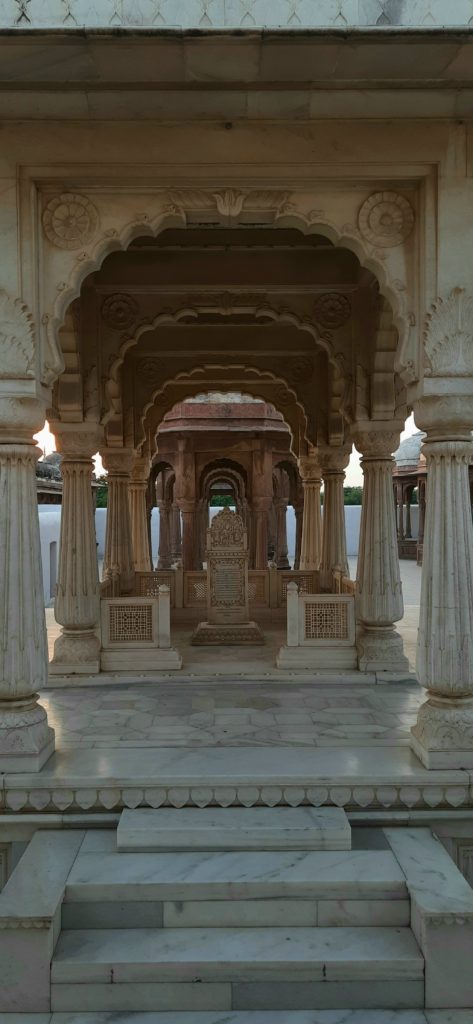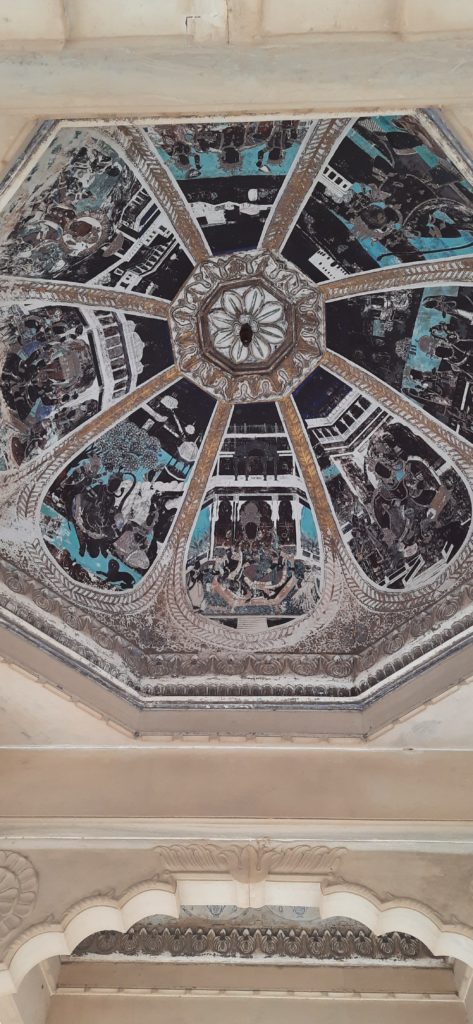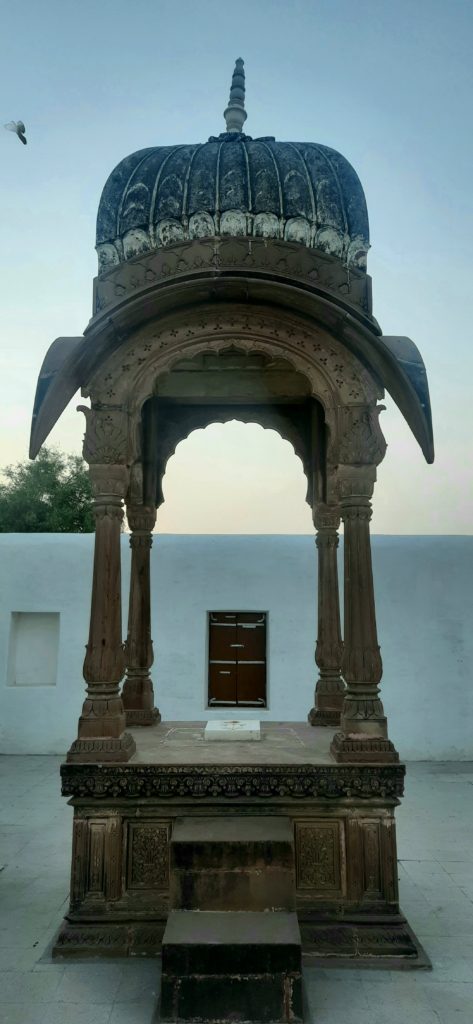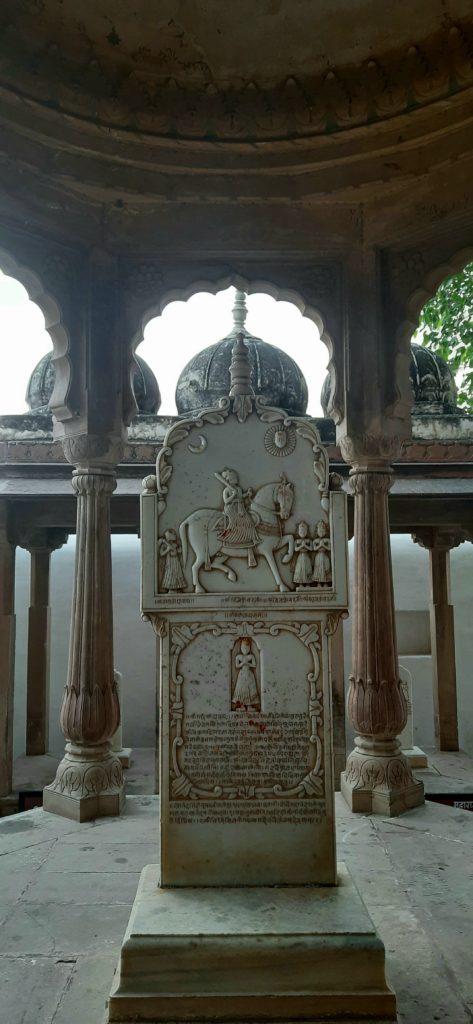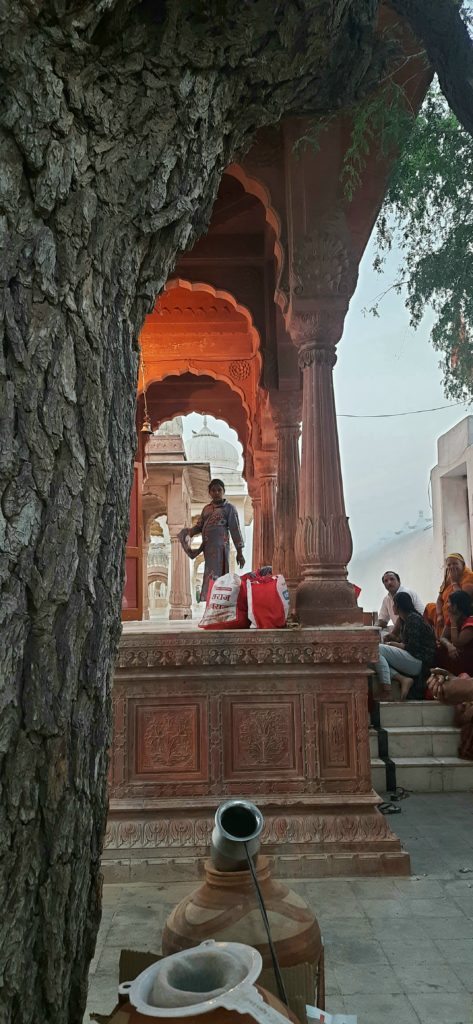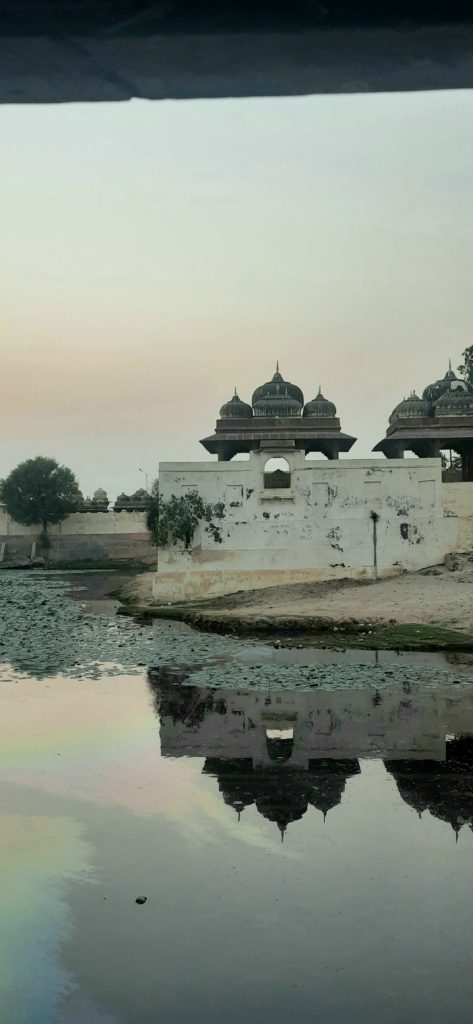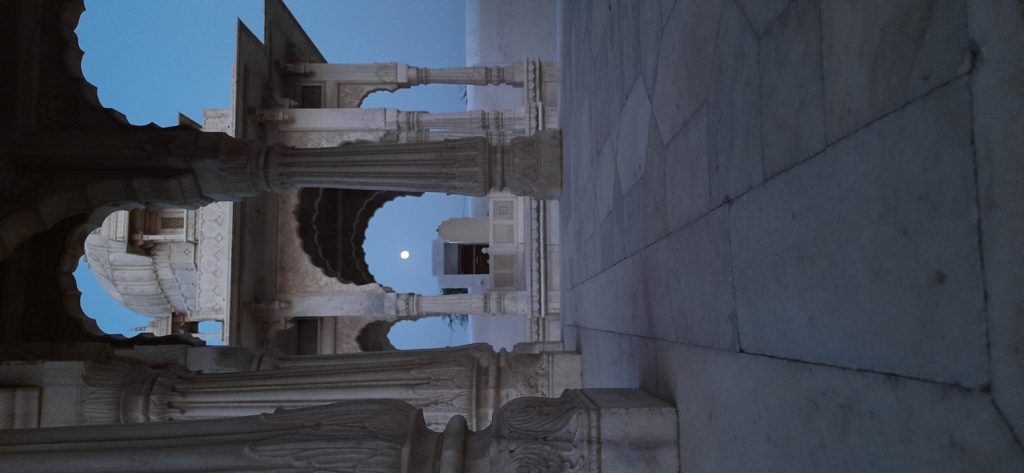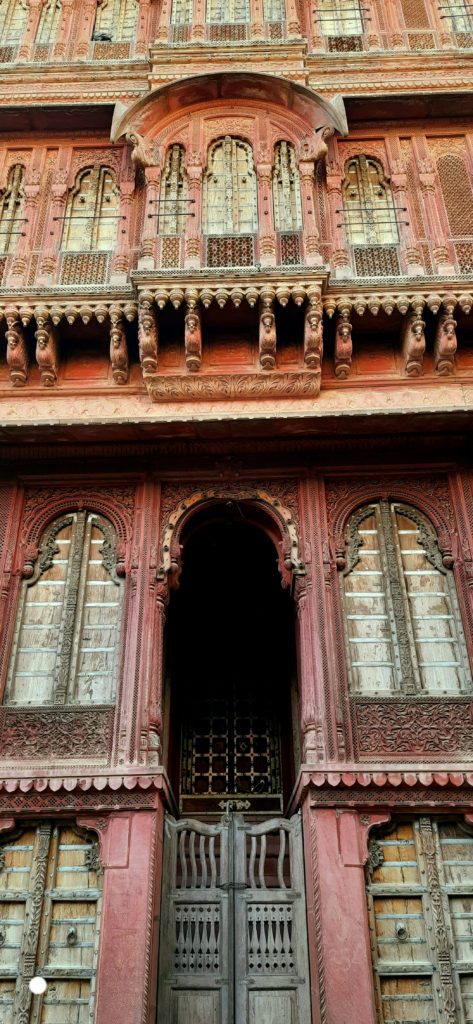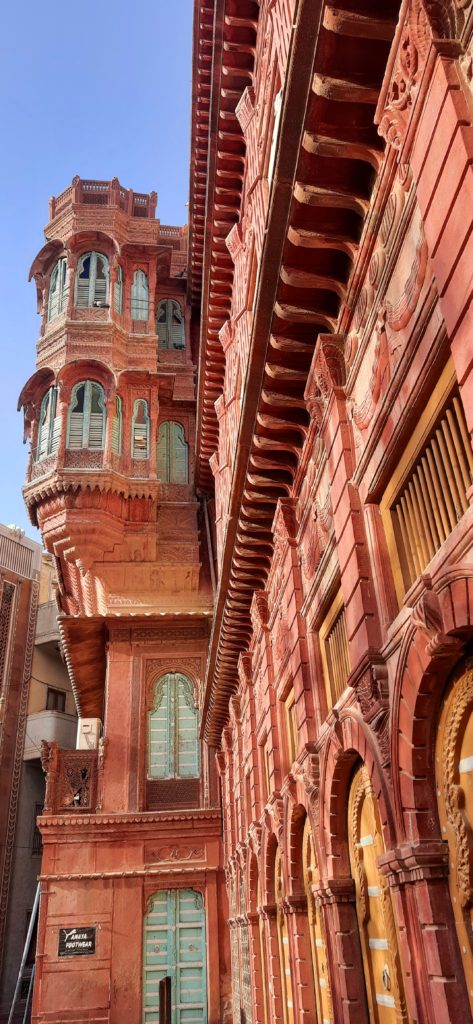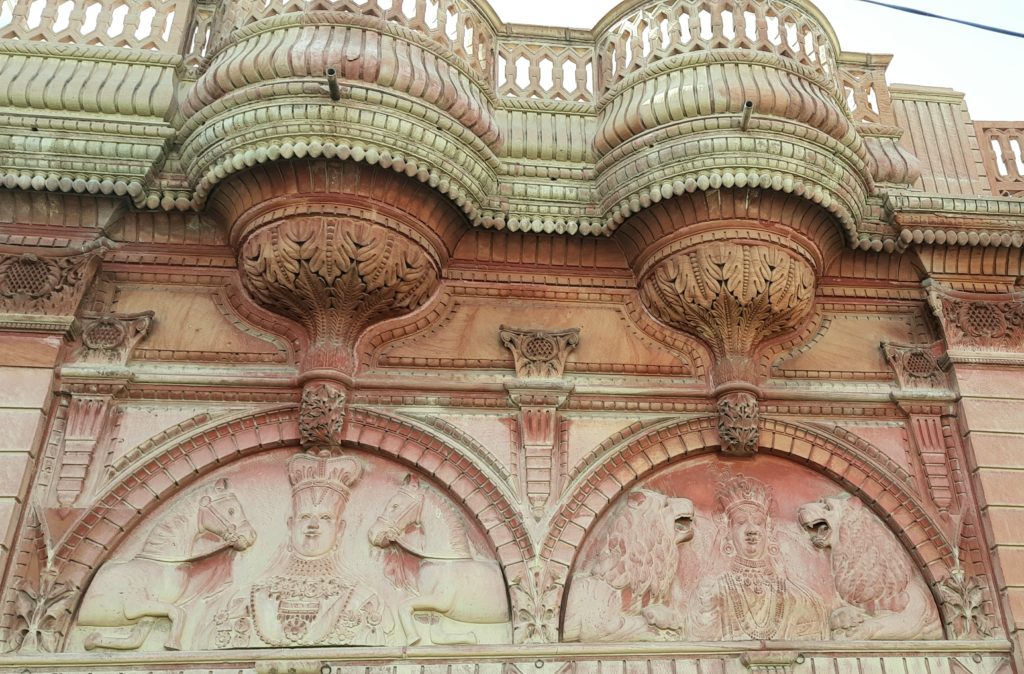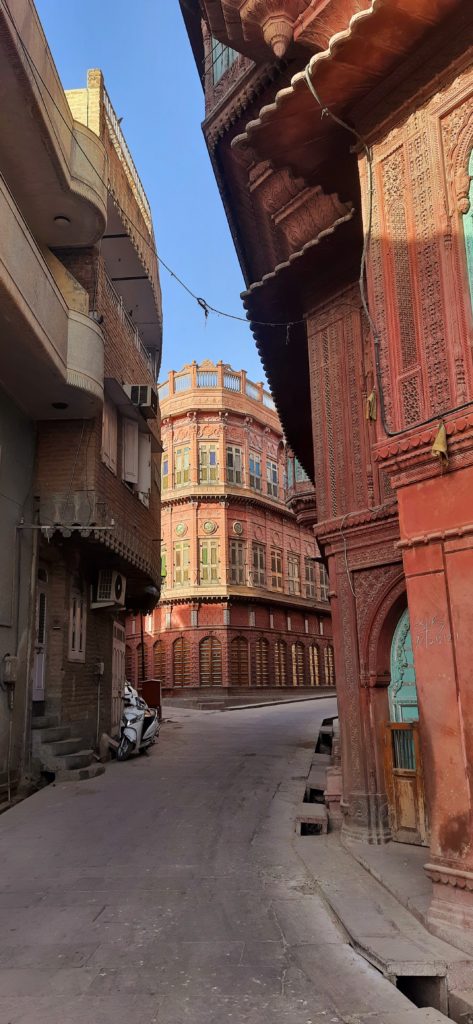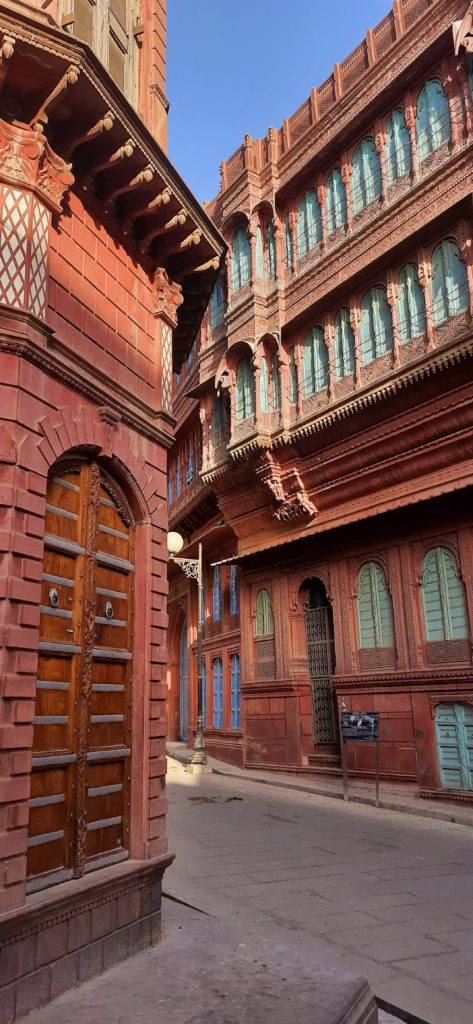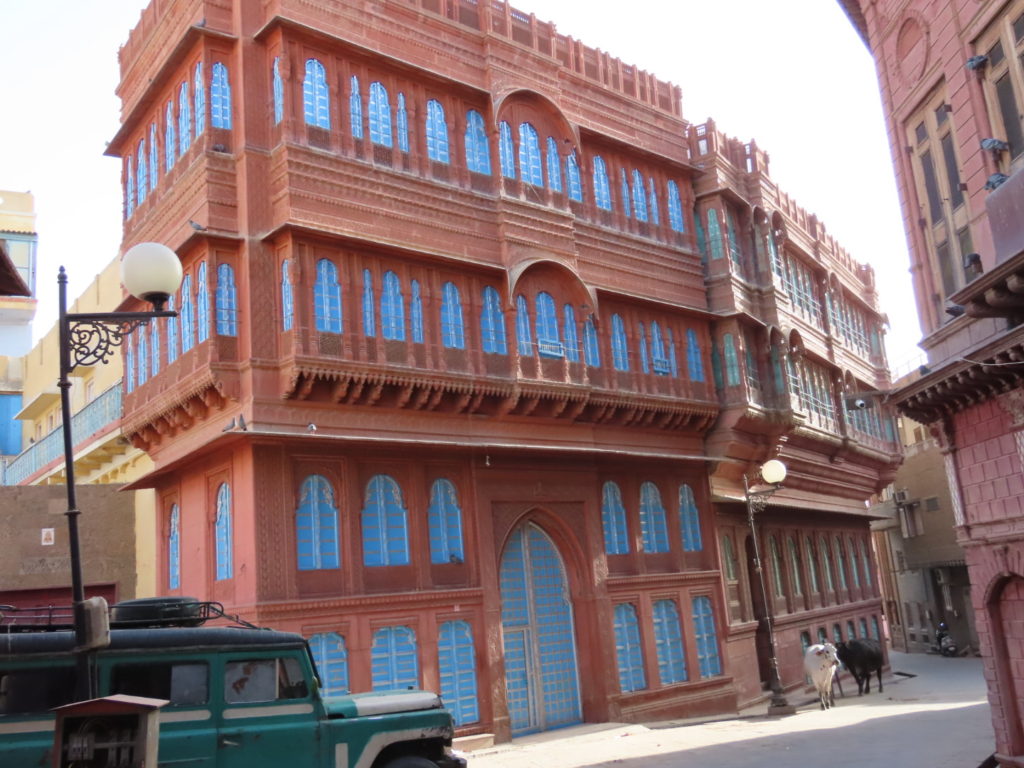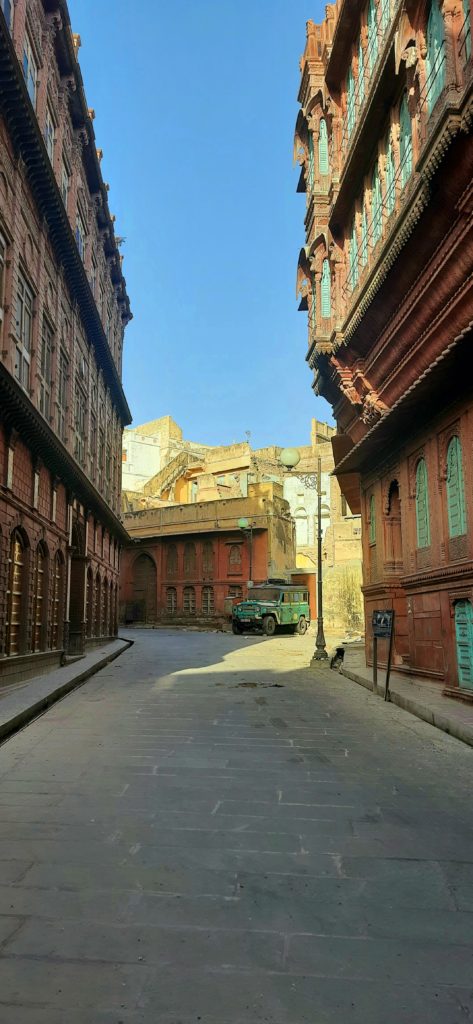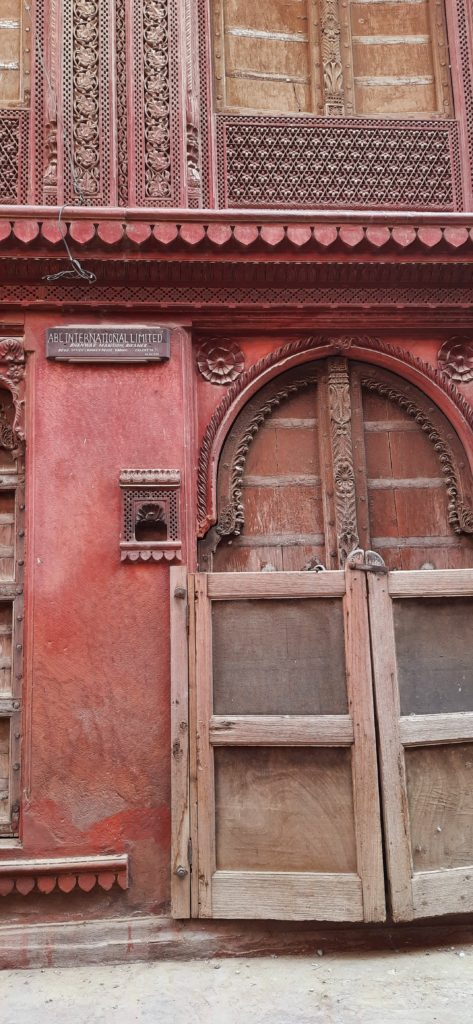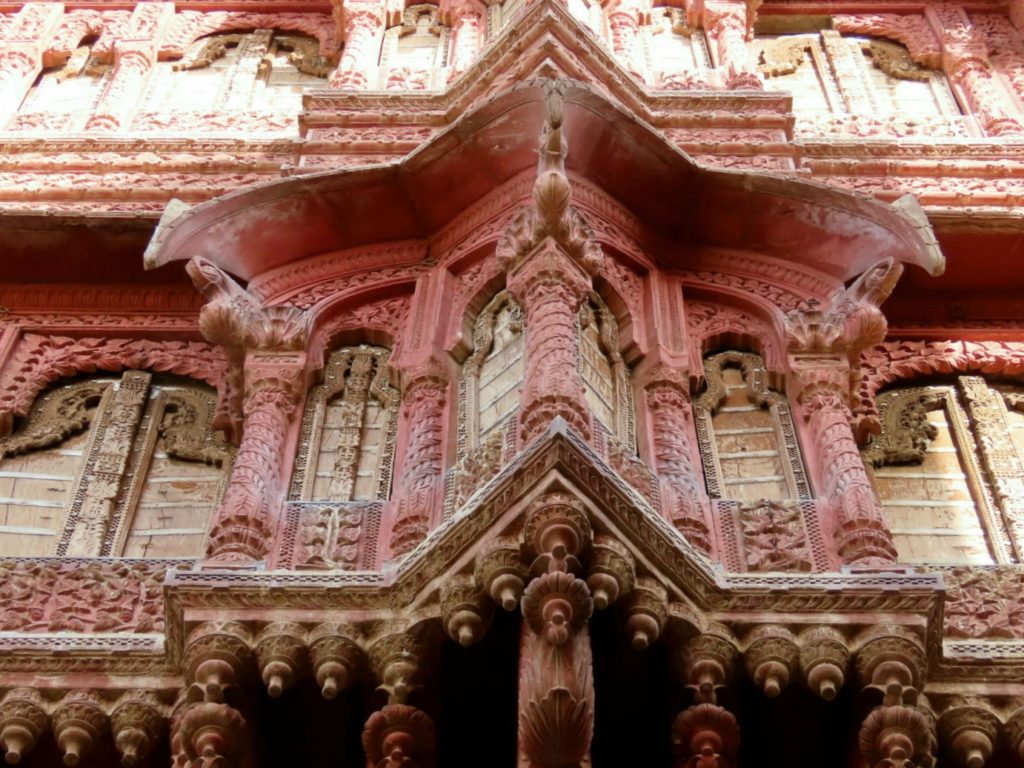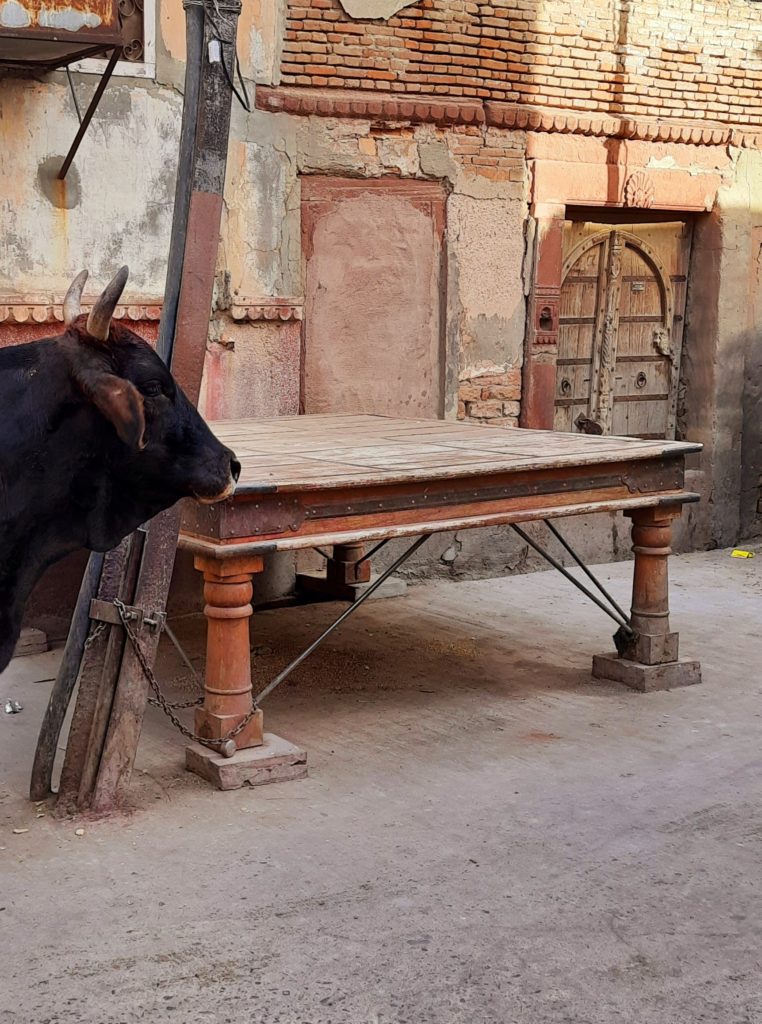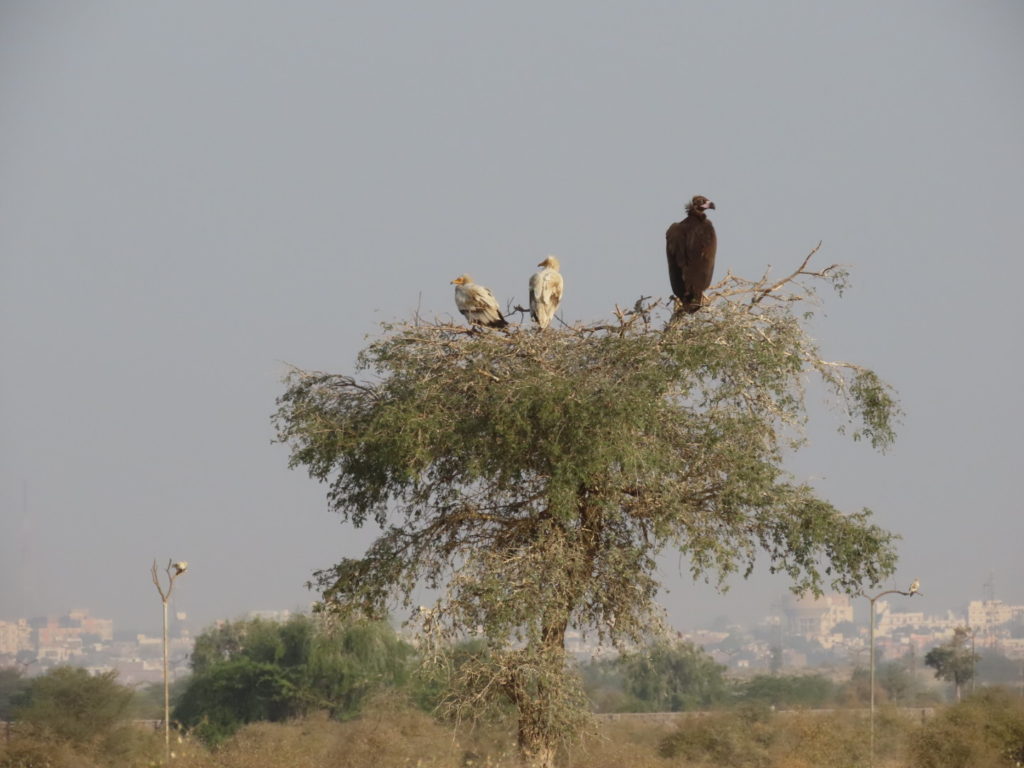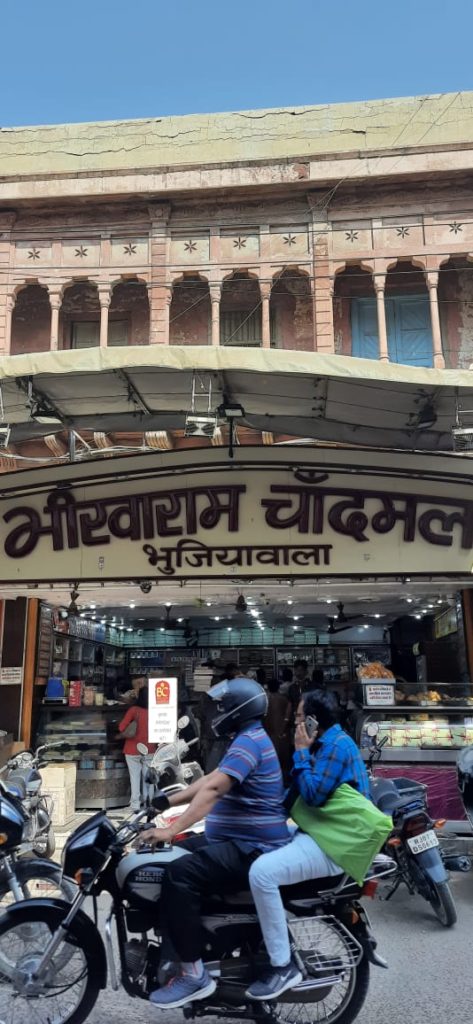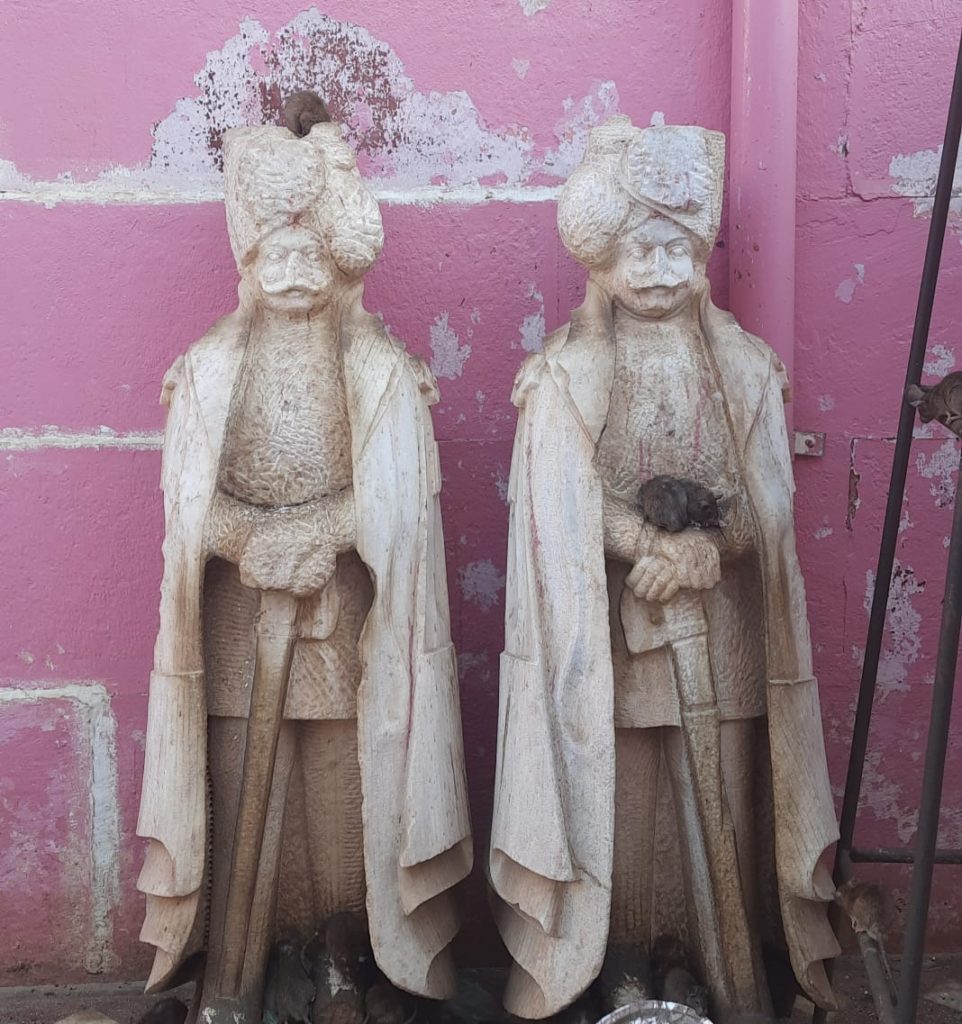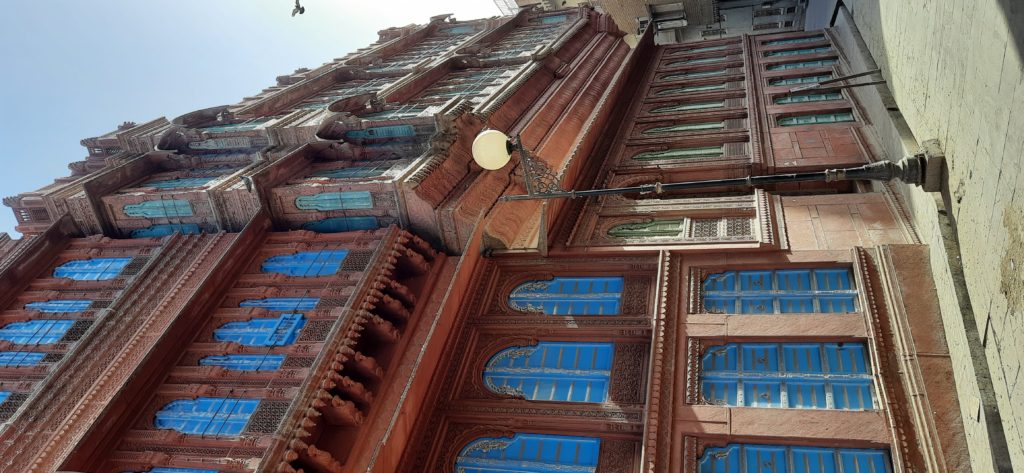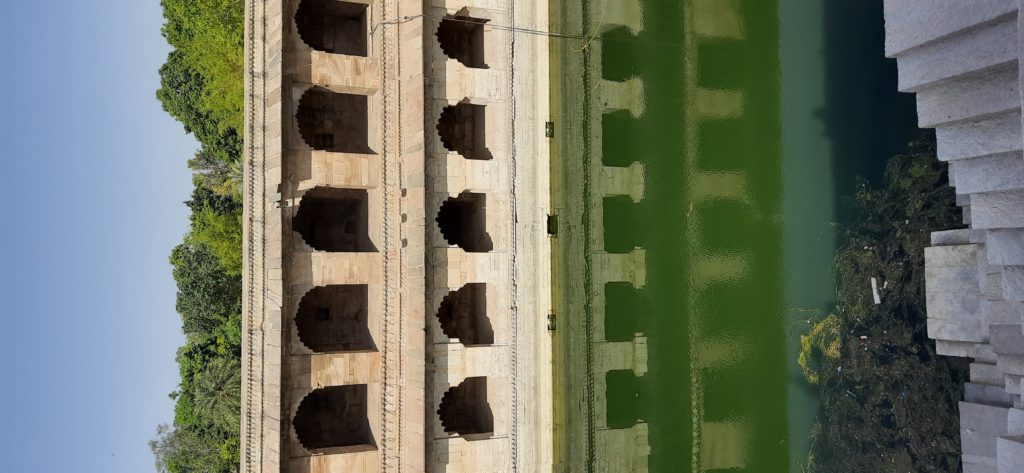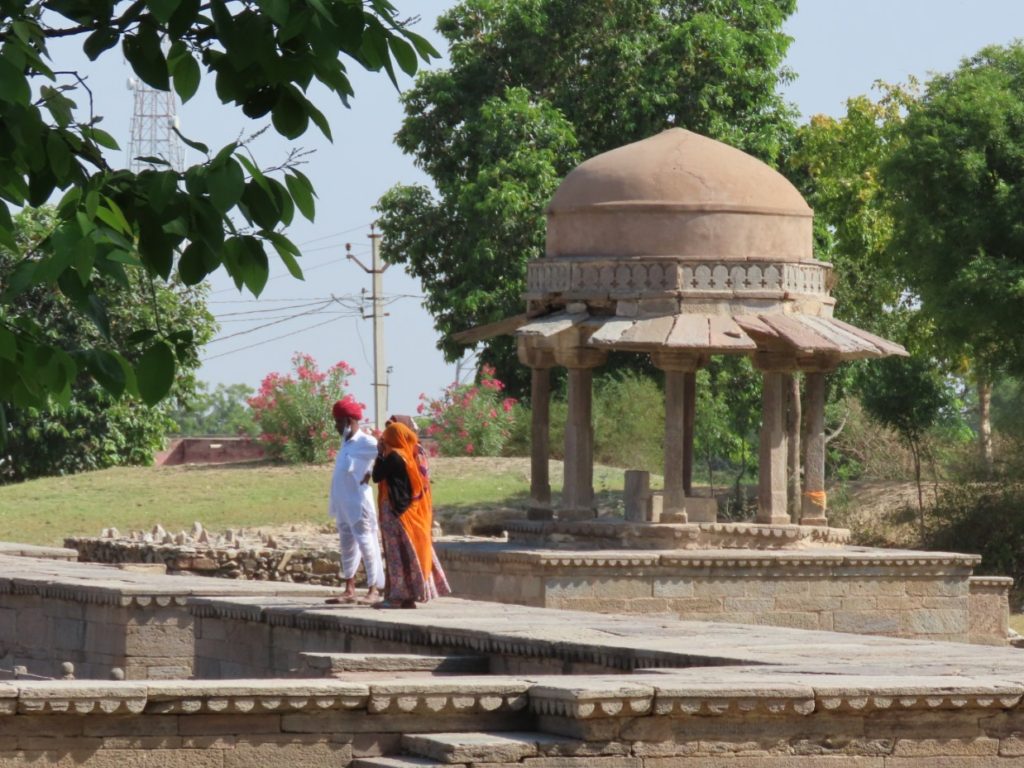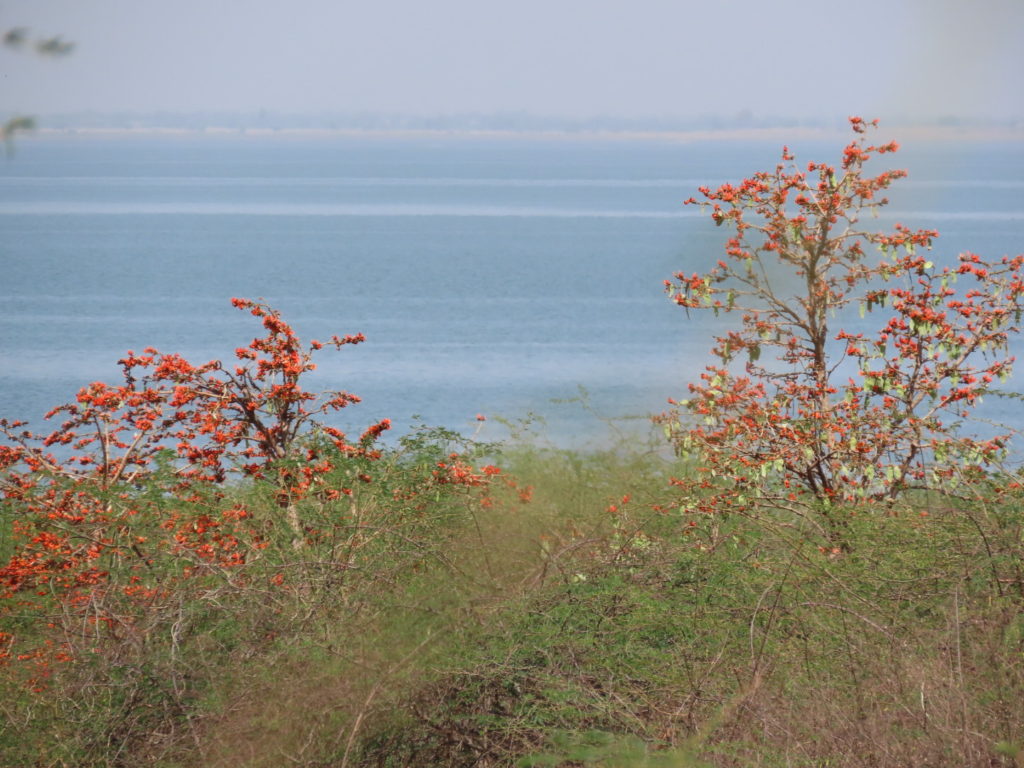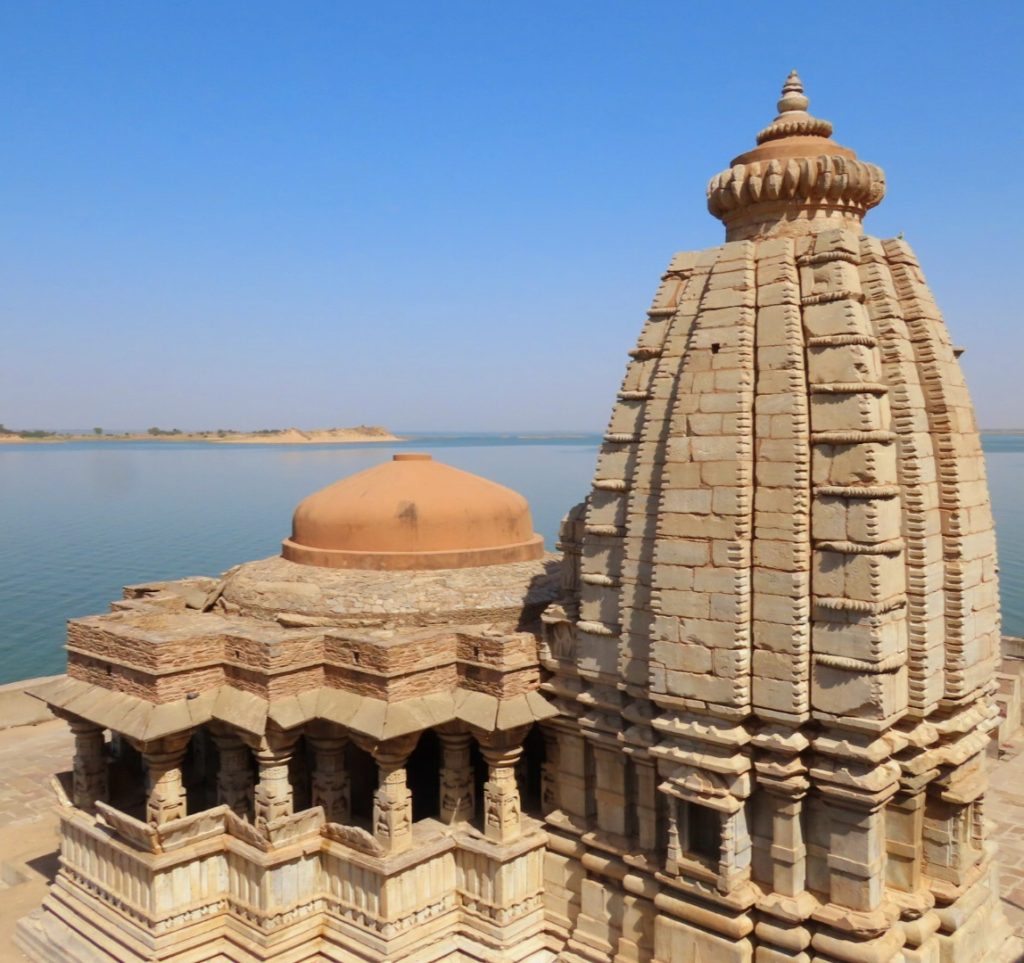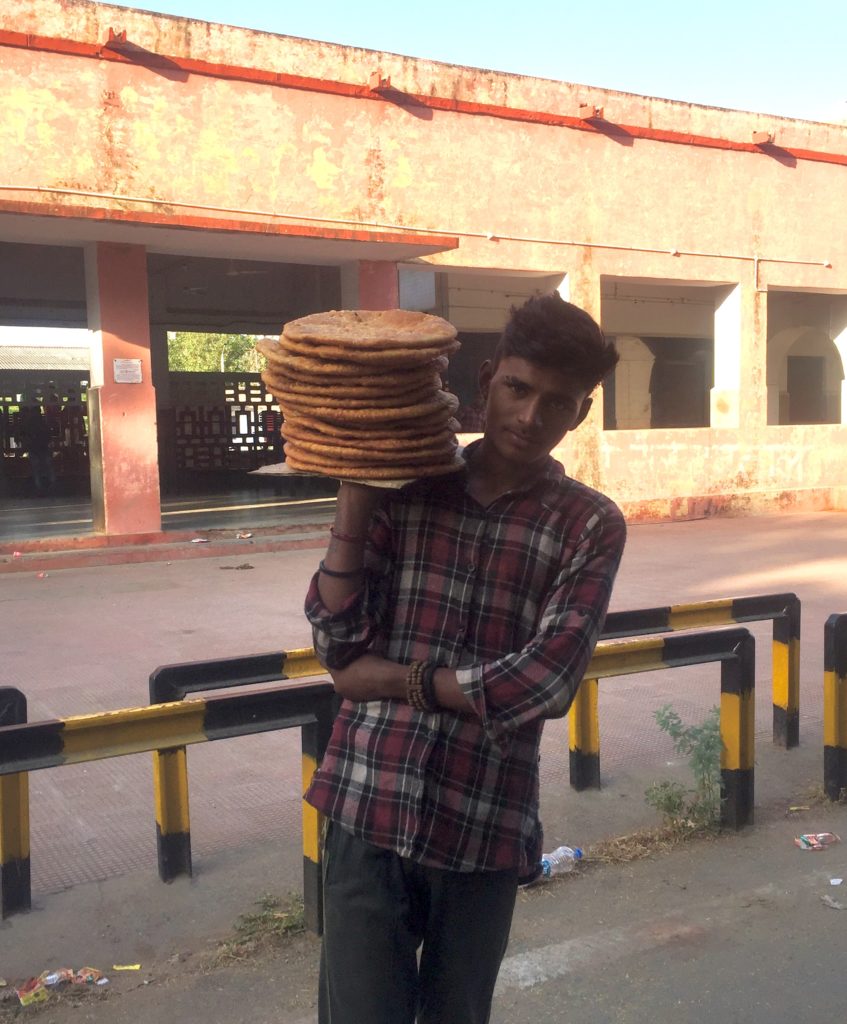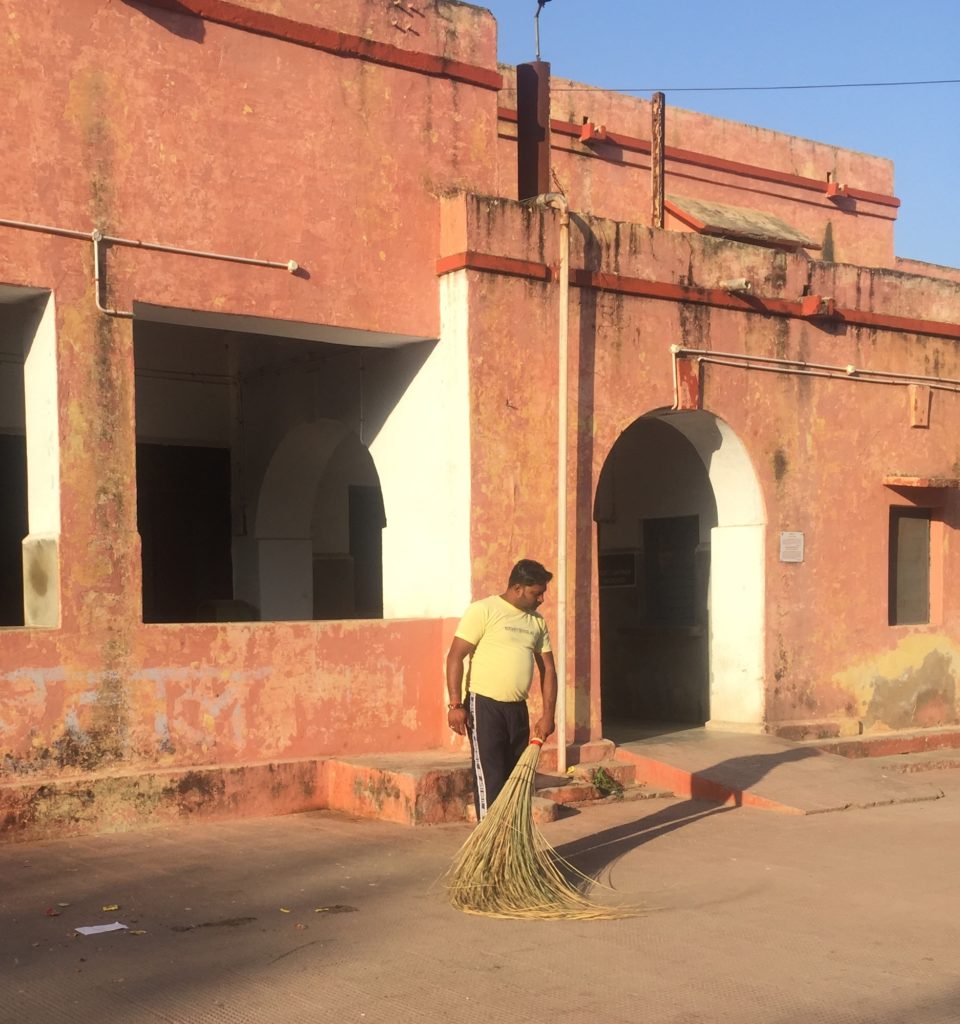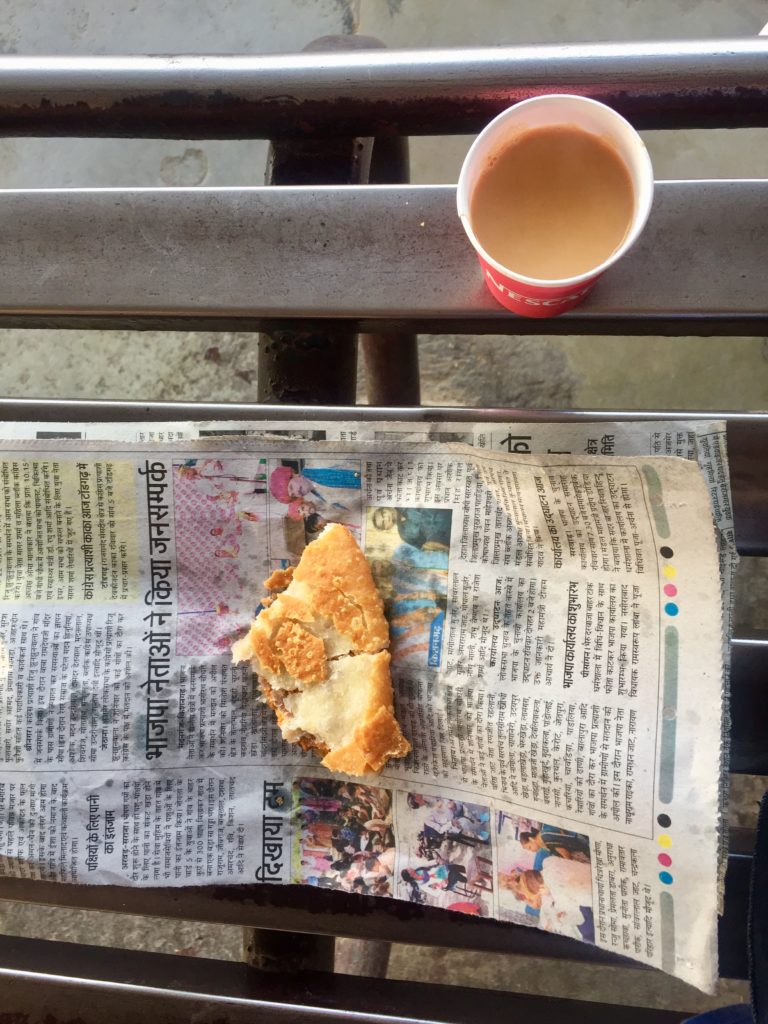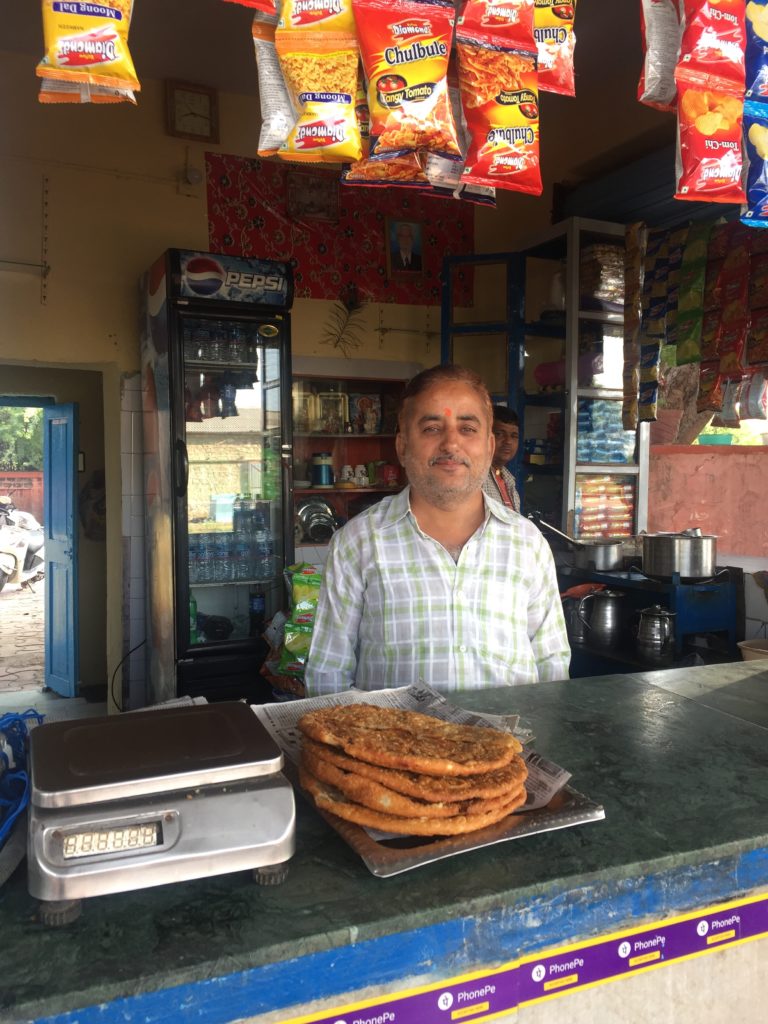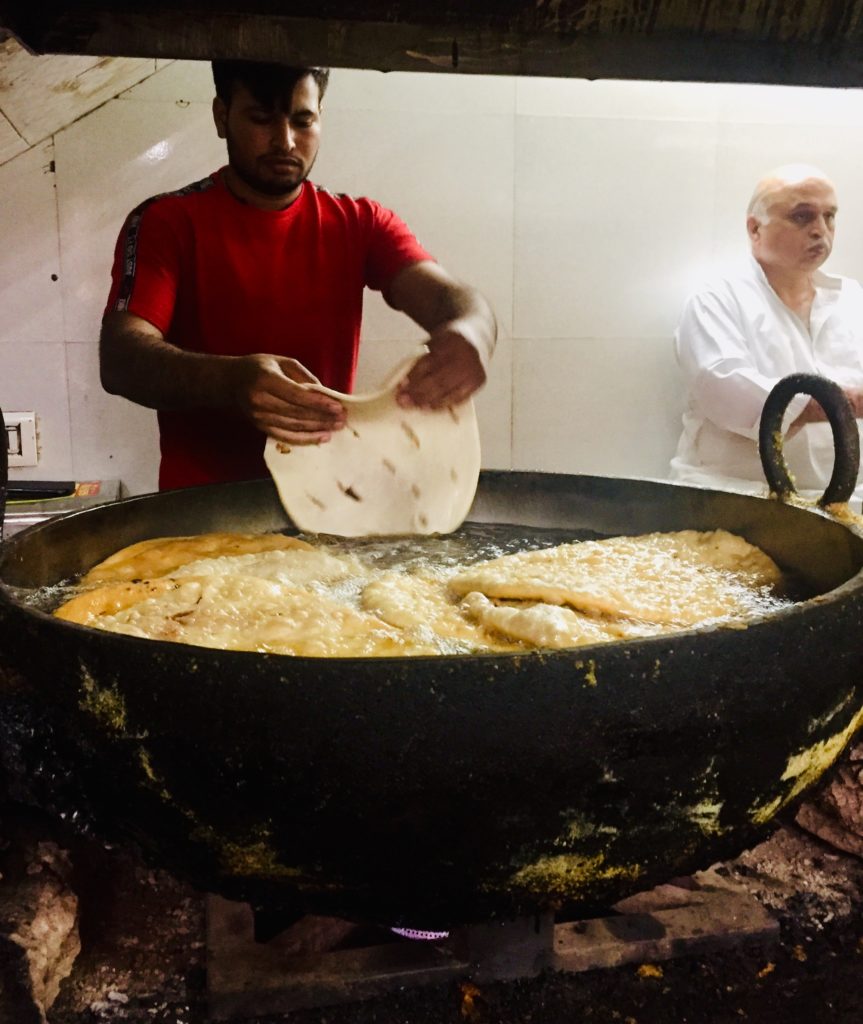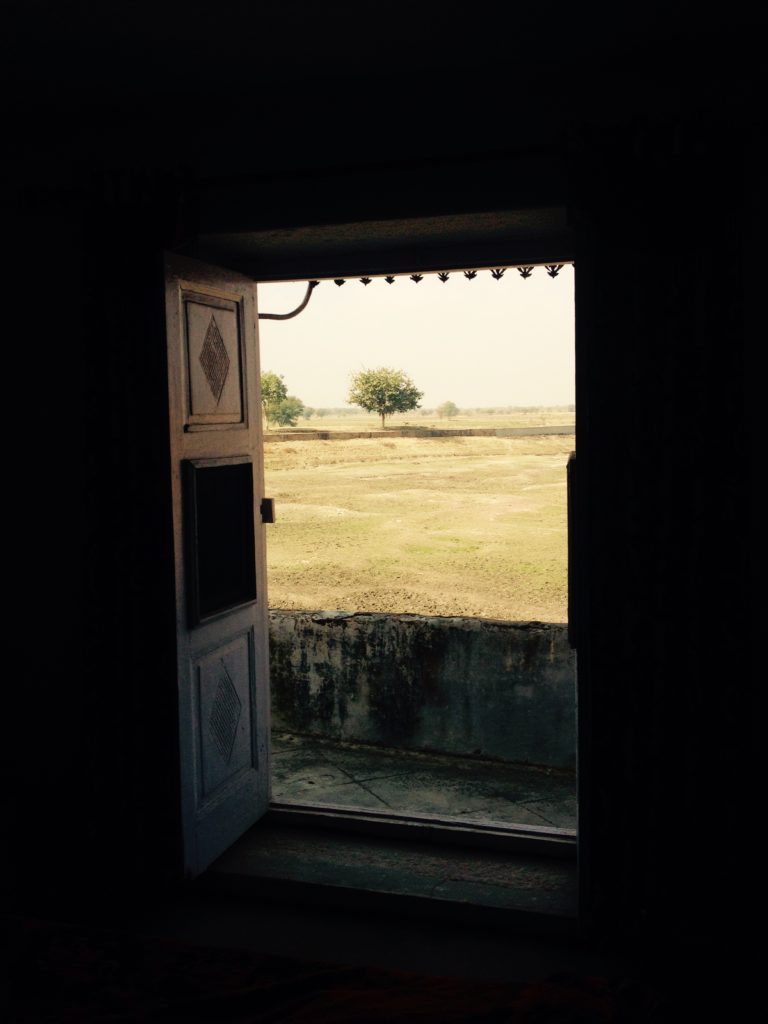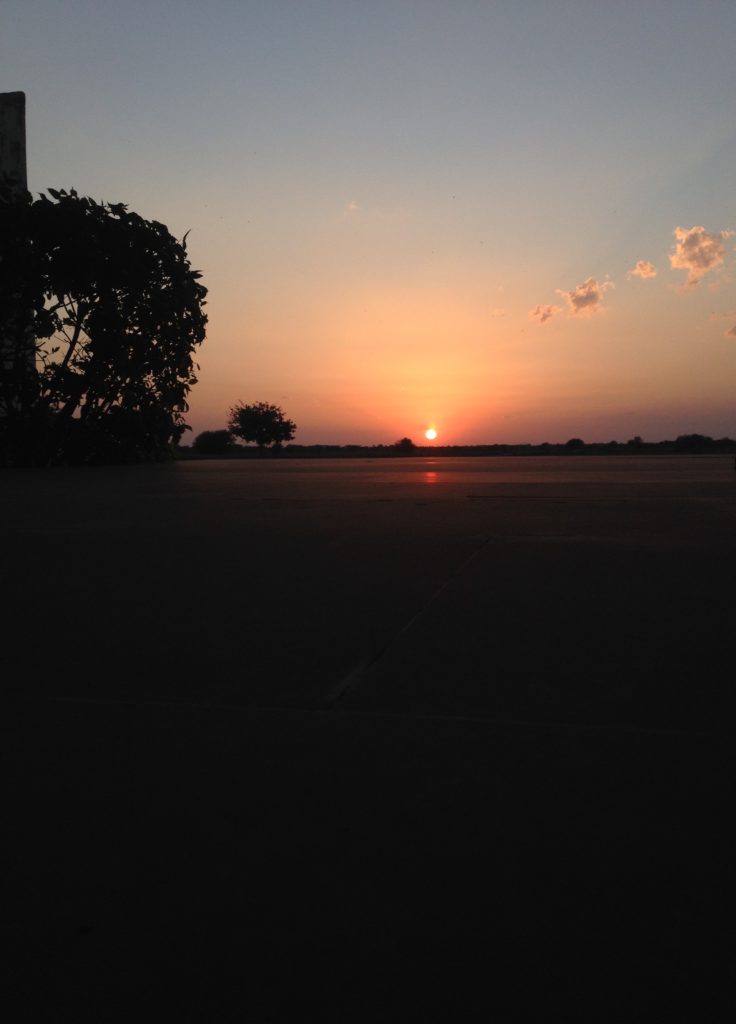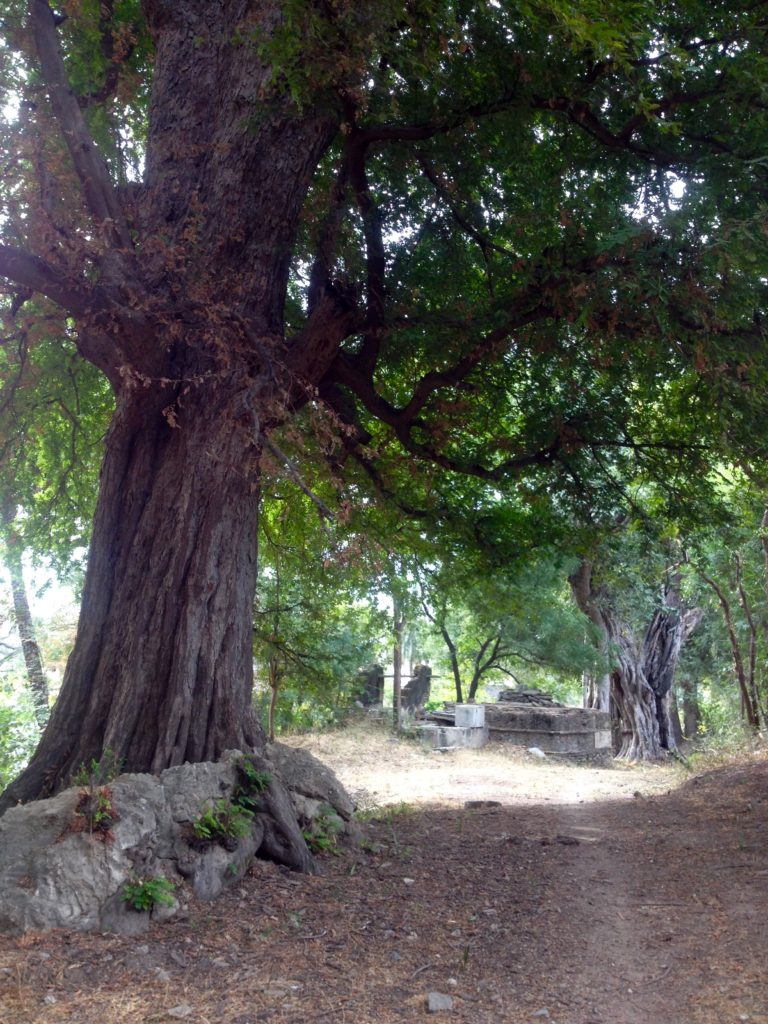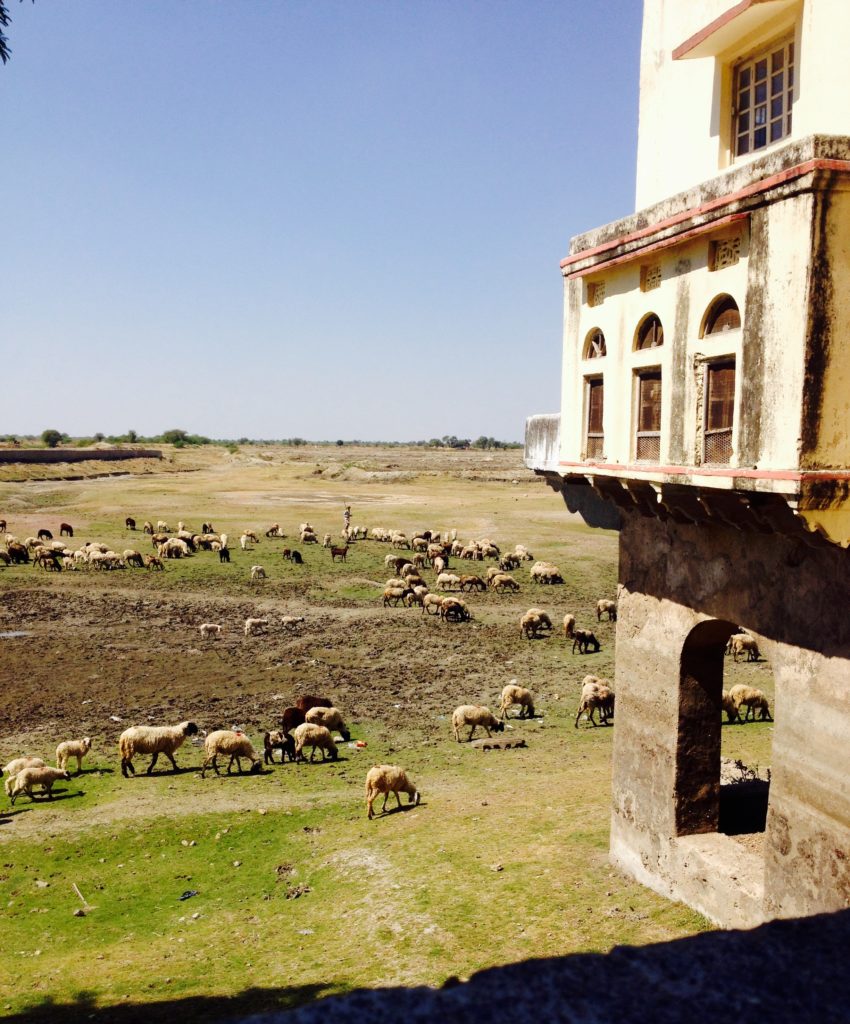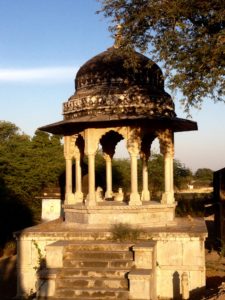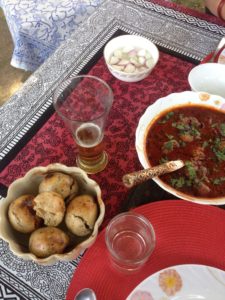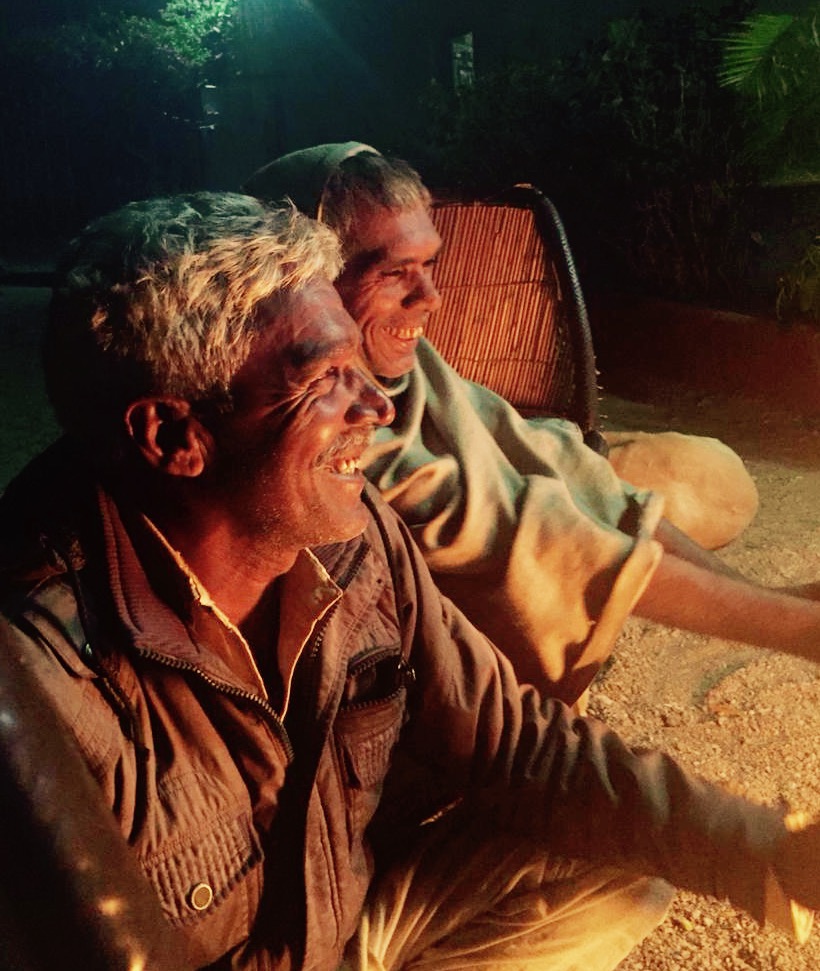What will we do with a door? The man asked for the nth time. Hang it above our bed like a canopy! I replied somewhat irately. On a flying visit to Jodhpur many moons back I had only one agenda. On the hunt I fell for these doorframes refurbished as bookracks. Stunnnning! (Someday…) This tall Gujarati door with its edges finely carved caught my eye. (Yeah, free guide to the doorways of India thrown in!). In the last warehouse, tiny doors connected these gargantuan halls, much like Aladdin’s cave interconnected in parallel portals. Stepping through to enter the last one something leaning on the wall behind stacked up furniture caught my eye. I made my way to stand in front of my door. A Shekhawati I was told. Since the territory had been the bulwark of the Rajput kingdoms to its south against marauding forces, diminutive doors made entry difficult and the metal embellishments reinforced their strength. A bit of a tall story about the small size…The tall gates of the havelis of Shekhawati, never mind the forts, would tell the small door to get back inside where it belonged and let them do the job of defending.
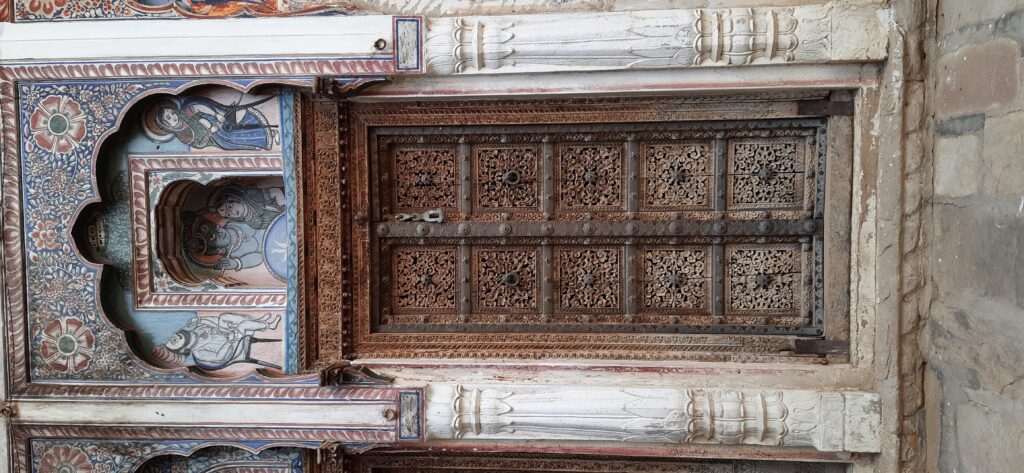
Year of the Backyard
Living in Shekhawati’s neighbourhood, through the Year of the Backyard as I call 2021, we had decided to stick to exploring places in our vicinity. One day sifting through some Facebook (it does have some redeeming features) pics I chanced upon stunning visuals of the havelis of Shekhawati. Wow! Art, architecture, history! Throw proximity in the pot and the recipe for an outing was complete. But let’s delve into the story of the region before we embark on a walk though the dusty hamlets and quaint towns that are a living art gallery.
Backyard also includes- Bikaner’s Merchants and Their Mansions
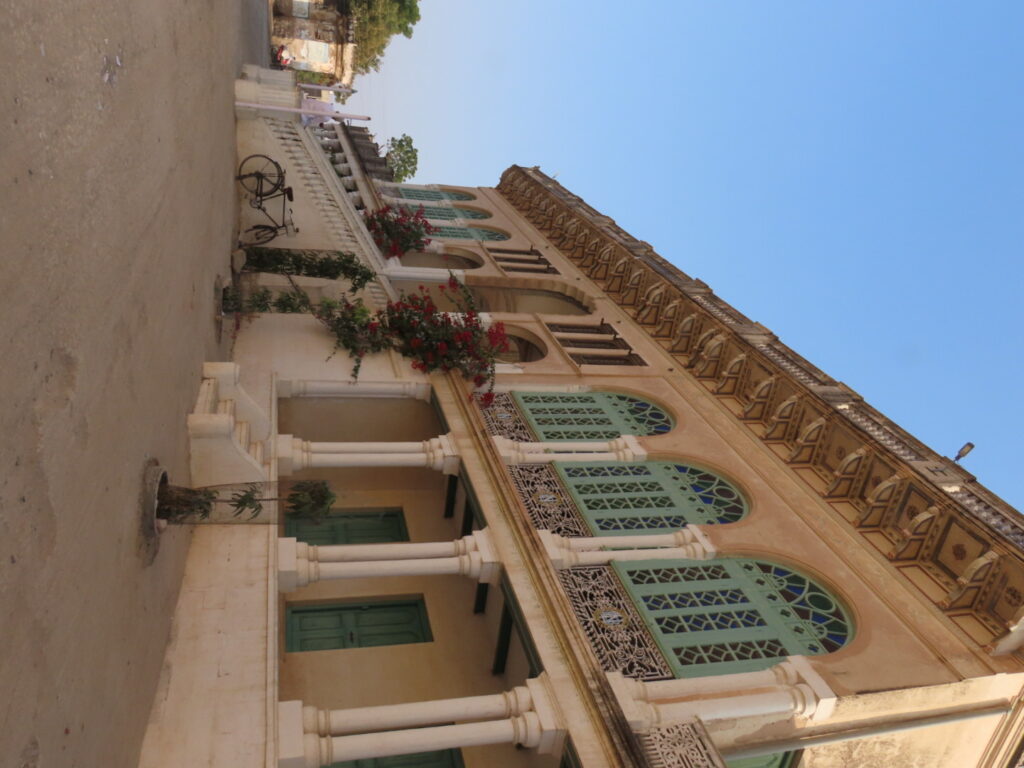
The Territory, Thikanedars and Traders
Shekhawati, the land of Rao Shekha and his descendants, was established as a separate principality when Rao Shekha declared independence from his Kacchawa clansmen at Amber in 1471. Over centuries it expanded to cover much of present Sikar, Jhunjhunu and Churu. His descendants and brethren constructed around 50 forts and palaces in this region and established their own fiefdoms or Thikanas like Nawalgarh, Mandawa, Dundlod. Shekhawati I am told means ‘Garden of Shekha’. I don’t buy that story. Garden is definitely not what this arid, sandy and drab territory can remotely be described as, where the only colour that blooms adorns either the attire of the people or the buildings made by them. It is also the land where the trading routes criss-crossed from Delhi and Kannauj to Sindh and Multan and towards Gujarat. The rulers depended on the merchants traversing through to pay jagat or transit dues to fill their coffers while the latter would get protection to carry on their trade safely. In time many moved and settled in these thikanas. Well known business families- Poddars, Goenkas, Birlas, Piramals to name some, trace their roots to this region.
Discover-The Gardens of Delhi – A Walk Not Only on the Green Side but Through History Itself
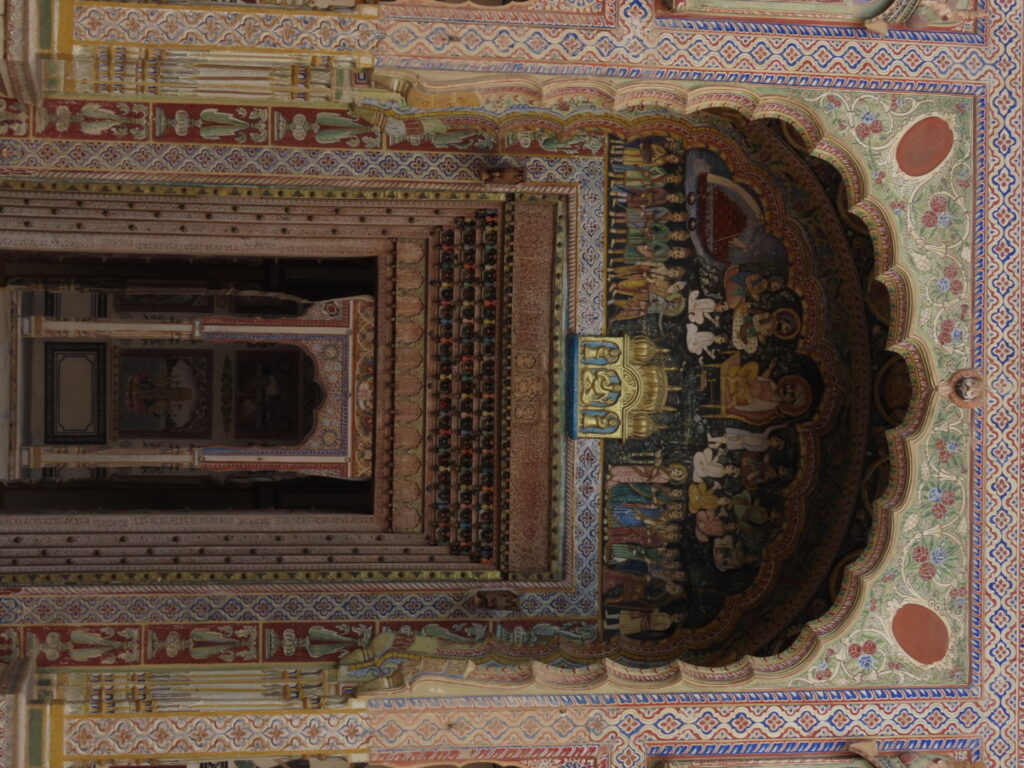
Being House Proud
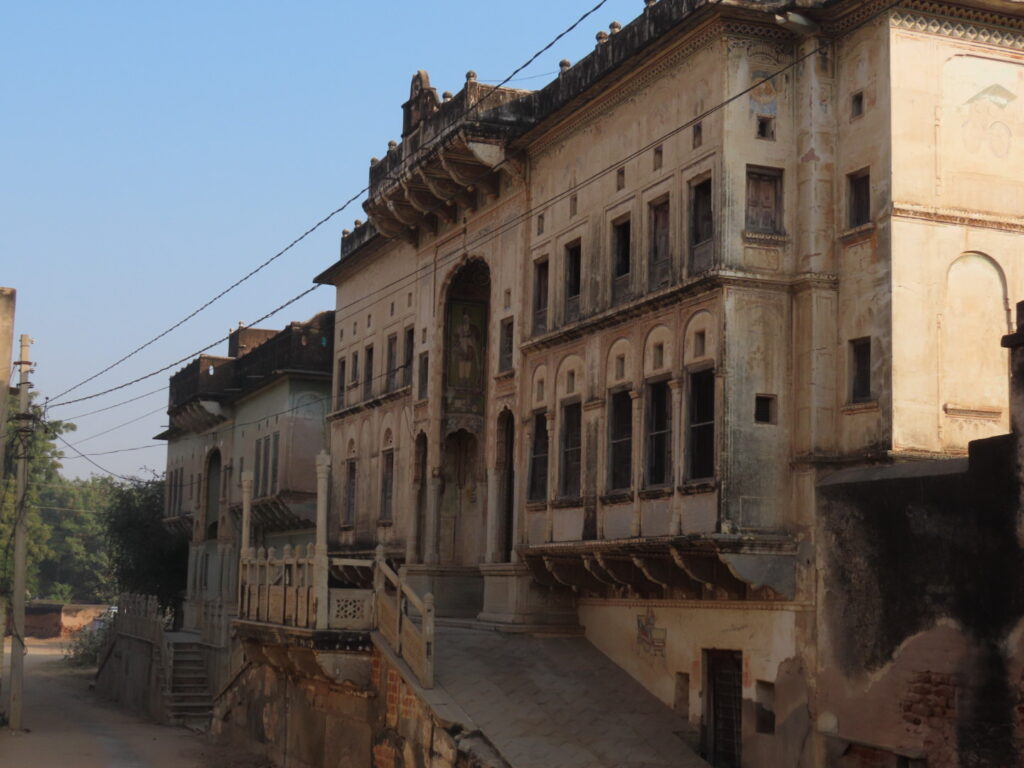
What a fort or garh is to a king or ruler in Rajasthan, a mansion or haveli is to a merchant. In a land where iconic forts like at Jaipur, Jodhpur and Jaisalmer draw the tourists, in Shekhawati its the havelis which hold their own. Here the merchants upstaged the rulers and their forts. In a ‘have it flaunt it’ attitude the merchants, as they prospered trading in cotton, opium, spices and silks, became patrons of art making their mansions not just more ornate but more opulent inside out. Once they were done with their own dwellings they moved on to making chattris, wells and ponds. But money is a Pied Piper. They followed it here and eventually in time trailed behind it to Calcutta and Bombay where new rulers set up bigger trading posts. Now most of the havelis lie forlornly neglected.
Camels walk- At the Darwaza of a Road Less Travelled
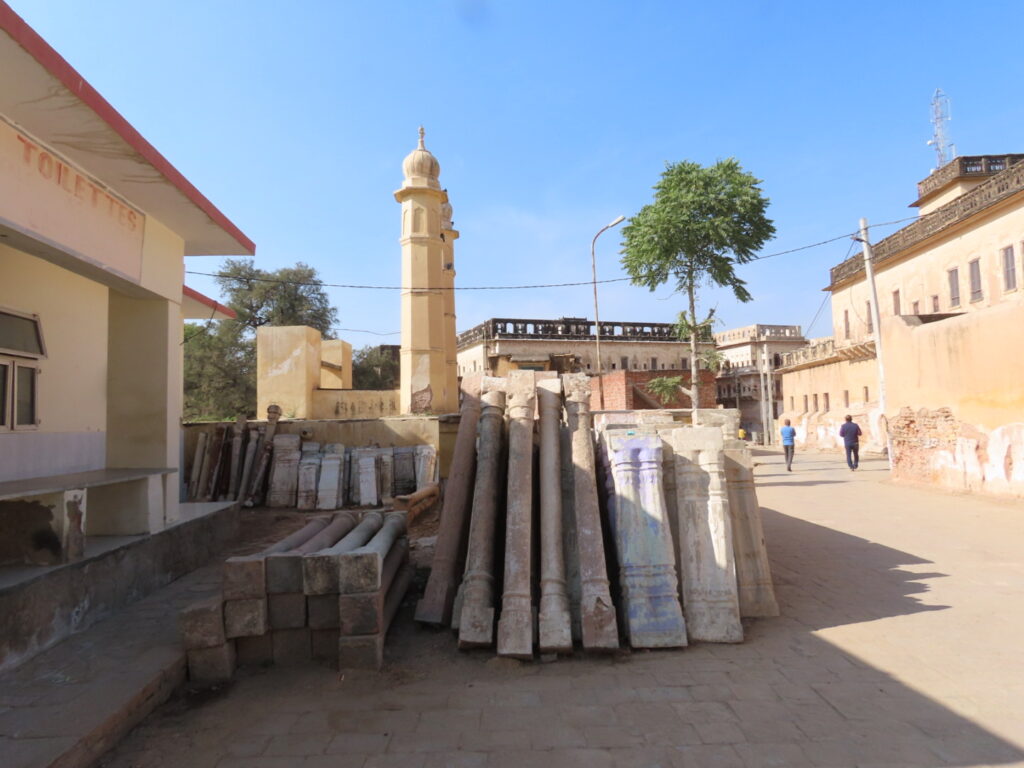
Artful Architecture
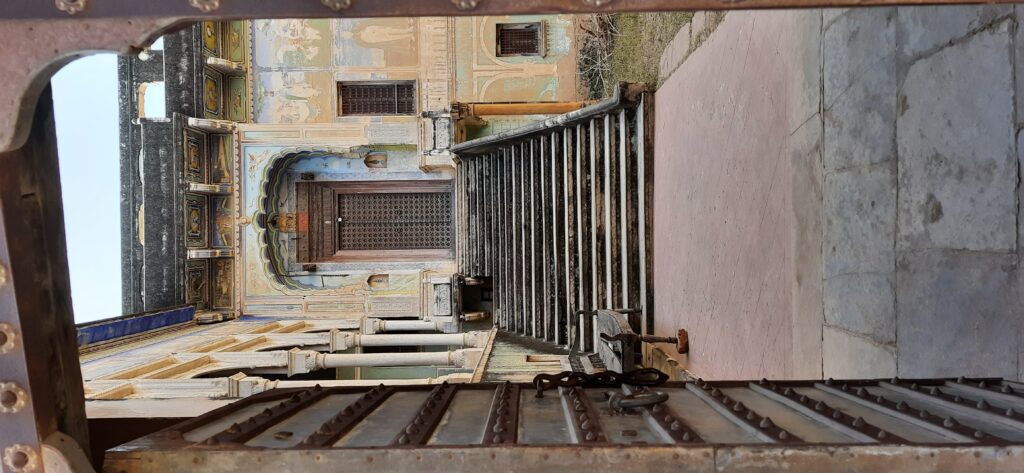
The havelis have a set template when it comes to architectural style with generally two courtyards and two storey’s. Massive arched doors make impressive entrances. The intricate woodwork of the doors and windows makes them a collector’s item. But it’s the frescoes adorning every inch of the building at times which are the piece de résistance. These encapsulate mythological and historical figures and tales, folk tales, flora and fauna, decorative designs, erotica and not the least the Britishers and their devices. Some depict faraway lands, few fanciful scenes, and occasionally plain hilarious ones. Gold leaf and Belgian glass is often a glittering embellishment. The richness of material and descriptive details were meant to shock and awe and they do, still!
Read about nature’s shockers in- Barot And the Serendipitous Catch in the Uhl River
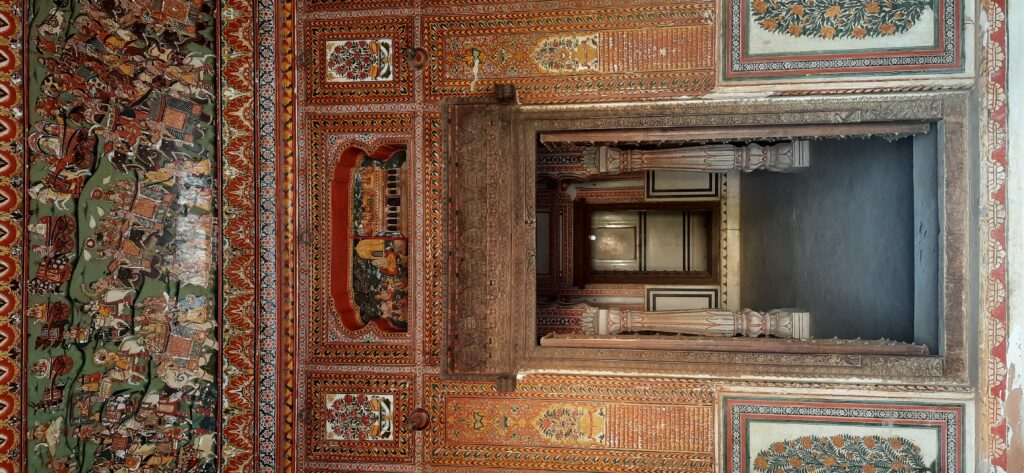
Once on a visit to the National Gallery of Modern Art in Delhi we were told it is nigh possible to see everything in it in a day. Shekhawati’s treasures too are scattered over numerous little towns and hamlets all vying for unhurried and close attention from discerning travelers to truly reveal their hidden facets. So what not to miss on a visit to a region which is a living art gallery where exceptional architecture provides a canvas for many a masterpiece?
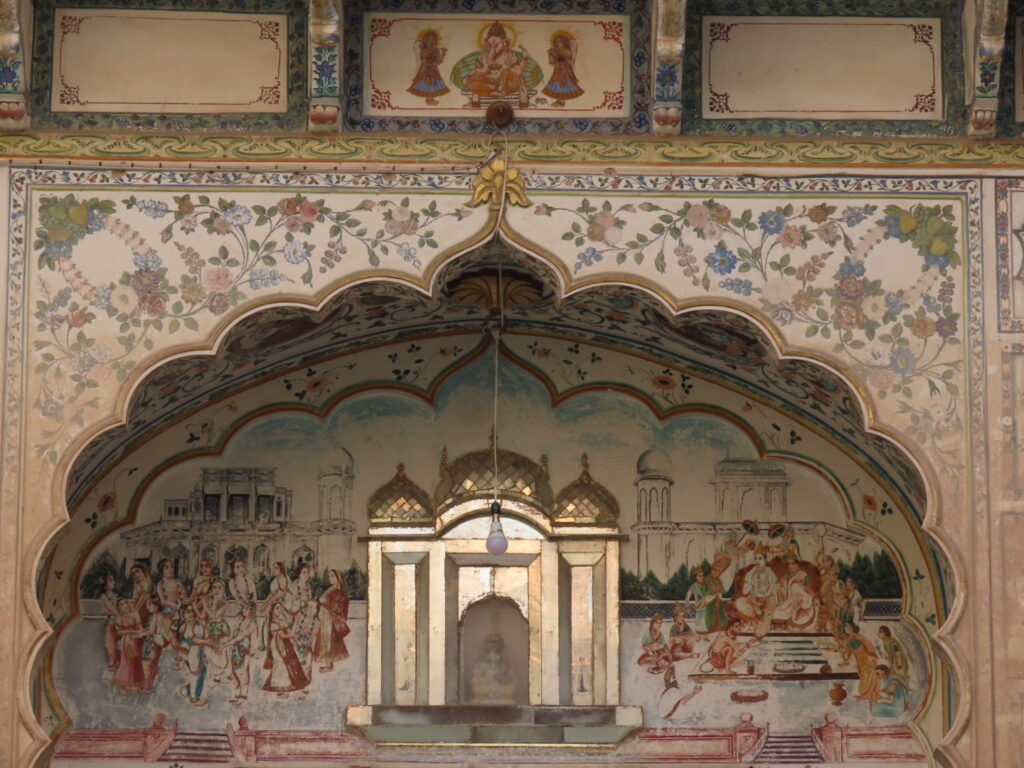
We’ll begin with Mandawa…coming up next.
